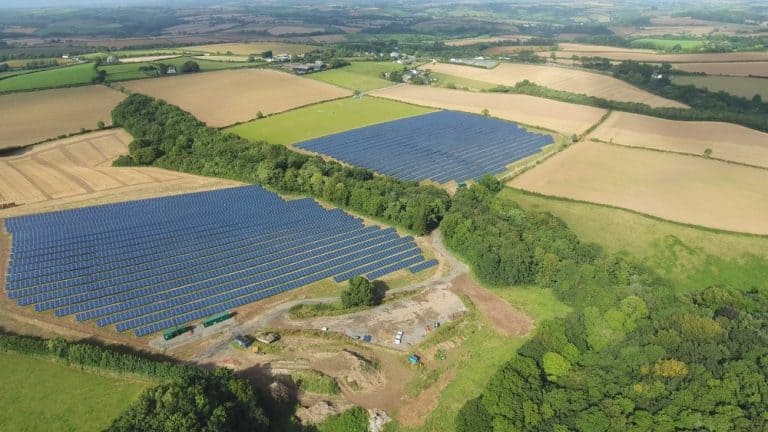What Homeowners Can Learn from Solar Energy Farms in Nevada

Solar farms lead the way in solar installations by kilowatts. Installing anything in mass often comes at a far cheaper price per unit. Residential solar sales, however, still offer significant returns on investment, making them a solid investment for Nevada homeowners.
Over the years, residential installations have increased due to the federal tax credit and local incentives. For the customer, residential solar save can save more overall.
Solar Farms and the Battle for Land
Nevada’s transition from fossil fuels deserves high praise. However, some fear of solar farms will negatively impact public lands.
The controversy over public land use isn’t new. Several other industries have tried and succeeded, transforming vast expanses of farmland and publicly protected land into skyscrapers and residential neighborhoods.
Those who value farm life and the ease it brings to everyone else, understandably, don’t want it stripped away. However, others value the convenience of having everything close. They argue society needs to repurpose at least some of this land.
The Space Needed For a Solar Farm
While installed solar panels do not pollute the air, they do take up space. The average commercial solar panel takes up about 20 square feet of land. The amount of land used to run a solar farm depends on the energy need. Most solar farms take up anywhere between 1 acre and 100 acres.
Solar Farms on Prime Farm Land
Land with few alternative purposes fits the bill best for a solar farm. However, these large scale solar projects often aren’t in these areas.
Solar farms need a transformer to move power onto the grid, which creates a problem for building on infertile land. Since the land isn’t usable, transformers, or transmission lines for that matter, often aren’t close, which adds extra costs to the project.
Potential Nevada Solar Farms
Many utilities have tried to use farmland and public lands for their solar farms. The most recent proposals in Nevada include the Gemini project and the sPower project.
If approved, the Gemini solar farm will cover 7,100 acres of federal land, creating the largest solar farm in the United States. The sPower project proposes building on 2,154 acres of Agriculture-Mining-Recreation zoned land.
What Utility-scale Solar Means for Nevadans
Renewables have become a growing part of our present and the way of the future. Many utilities, like NV Energy, have installed solar farms because of the technological transition.
Due to the decreased cost of maintenance and long-term savings, it should mean their customers get a better rate. However, most utilities charge customers more for their renewable energy programs than they do for fossil fuels.
Utilities have several reasons for this increased rate. However, it doesn’t make sense for the customer to pay more to the utility when they can save money with residential solar.
Nevada’s Solar Power History
An increase in residential solar installations occurred in 2015. In anticipation of the competition of residential solar, NV Energy built a proposal. The PUC approved the proposal and temporarily wiped out net metering in Nevada until 2017. Interestingly, the year NV Energy had without competition, utility-scale solar farms skyrocketed in Nevada.

Northern NV Green Energy Choice Program
Now Northern NV Energy customers can join their green energy choice program. This program allows customers to get power from NV Energy renewable resources, with an extra fee.
For an extra charge per watt, customers can have all or half of their energy produced by renewable sources for a minimum of 12 months. These renewables include a combination of geothermal, solar, and hydropower.
For those who can’t get solar for their home, this option allows them to support renewable energy. This energy choice, however, isn’t the best option for those who can qualify for residential solar.
Nevada’s Residential Solar Solution
Solar is a part of the solution to the problem, not the cause. When individuals install residential solar, they can address both the issue of space and cost. Residential solar uses less space, and it helps reduce customer costs. As icing on the cake, it also helps decrease your Reno home’s carbon footprint.
Utilizing Reno Citizen’s Unused Space
Most individuals have the solar array installed on their rooftops. A rooftop system allows solar to provide power to the home without taking up more valuable land. However, ground mount installation options, which can be installed near the home on the owner’s properties, are also a viable alternative.
Save Money While Saving the Planet
Purchasing a solar array also gives customers control over power production. After purchasing a solar array, customers no longer have to pay for the power they produce. This means that for 25+ years you don’t have to worry about large, varying electric bills, which will inevitably become more expensive since their power source is nonrenewable.
Purchasing a solar array gives customers control over power production. After purchasing a solar array, customers no longer have to pay for the power they produce.
If you would like to learn more about solar for your Nevada home, we can help. Go Solar Group has the answers to your questions and can help you determine if your Reno home can go solar.



Send a Message
Oops! We could not locate your form.